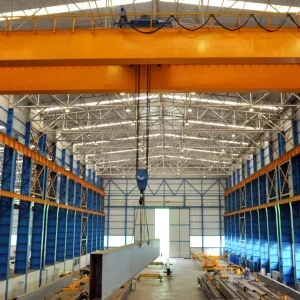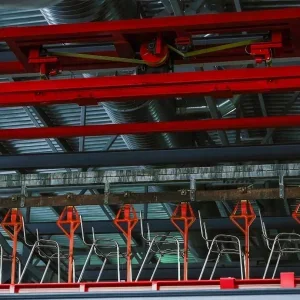The rapid rise of the electric hoist seems to have eclipsed the air hoist. Even in such a traditional stronghold as car manufacturing, air hoists have lost out to apparently cheaper electric hoists. Air remains popular where duty-cycle performance matters and in heavy industries such as shipbuilding.
Figures from the Material Handling Industry of America show shipment values for electric chain and wire rope hoists to be about four times higher than equivalent categories for air powered versions. Shipments of electric wire rope hoists in 1997 were worth $137m against $34m for air powered versions. While the market for electric hoists is larger, the difference has remained constant for more than 10 years. If air has lost market share it happened before the mid 1980s. Is it time for an air hoist comeback? Have the potential benefits of air hoists been forgotten? Improved electric motor ratings and better electrical safety have been fundamental to the demise of air hoists. But is electricity seen (bizarrely) as some kind of ‘clean’ alternative to compressed air? Weight and ease of use are other important considerations, as is reliability. In researching this issue of HOIST, we have been given the impression that even those manufacturers who produce both types of hoist favour their electric versions.
Is the shift towards electric hoists another sign of short-termism in that electricity is more widely available and, despite air’s advantages in certain applications, electricity is still chosen because it doesn’t require as much initial outlay, even though there might be advantages in the long run?






